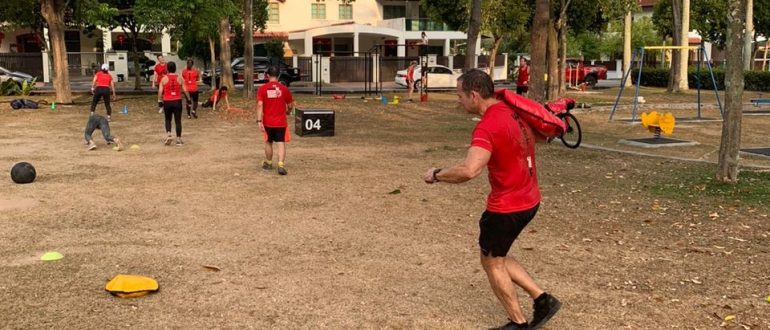
Strength training is usually associated with building muscle, but if you are doing any sort of long distance running or cycling, you also need to build c onnective tissue strength. Your tendons and ligaments, in particular, are responsible for putting force through your muscles. This movement of force creates an elastic recoil effect known as the stretch-shortening cycle (SSC) that helps you to run, jump, and make a variety of other movements.
Why Tendon Health Matters
Tendons connect bone to muscle. They allow us to move our muscles, absorb impact, and transfer force. Ligaments connect bone to bone, keeping our joints stable and in place. Tendons and ligaments provide an elastic recoil response that allows us to run, jump, and lift heavy things quickly. As we age, tendon elasticity decreases. Connective tissue injuries mostly occur for endurance athletes due to our lifestyle of linear frontal movements that come from continuous repetitions (like running and cycling). Sitting for hours at a desk further weakens tendons and ligaments. So how do you increase tendon elasticity?
Can You Strengthen Tendons?
The short answer is yes — you can strengthen your tendons. But, when compared to changes in muscle tissue, which can take just days to improve, the tendon’s structural tissue can take weeks or months to adapt. One study showed that it took two months before tendon stiffness improved, and this also included changes in collagen structure and synthesis. This is why tendon and ligament injuries take longer to heal — there is limited blood supply going to these connective tissues. Thus, it also takes more time for a tendon to adapt to training stress compared to muscles.
Tendon (and ligament) strength and tendon (and ligament) stiffness are essentially interchangeable terms that refer to how strong the tendon or ligament is. By working on strength and elasticity, strength training can keep these connective tissues “snappy”. Over time, this could result in lower ground contact time and faster cadences for the bike and run, allowing you to increase your efficiency in these sports.
How to Strengthen Tendons and Ligaments With Connective Tissue Exercises
So how do we build strength in our connective tissues? There are many ways to strengthen tendons, but for the purpose of this article, we’ll focus on doing so through strength training. This includes eccentric training, plyometrics, and isometric forces.
1. Eccentric Training
Eccentric training includes resistance training exercises that are typically done with lighter weights, allowing muscles and tendons to lengthen. Take heel raises, for example. When you lower your heels back down after the raise in a slow and deliberate manner, that is an eccentric movement.
Multiple studies have been done on eccentric training and tendon stiffness. These studies found that tendon stiffness does not change, or improves minimally, with body weight alone. Instead, weighted protocols on a single leg resulted in better improvement in tendon stiffness.
A few examples of eccentric training exercises that can help strengthen tendons and ligaments include:
- Eccentric heel raises
- Single-leg squats
- Single-leg deadlifts
2. Plyometrics
Explosive movements like plyometrics — such as squat jumps, single leg hops, depth jumps, box jumps, and quick feet step-ups — may help build tendon strength and make your legs feel a little more snappy, as long as you don’t overdo it.

Plyometrics use the tendon’s recoil response to execute explosive movements. Take, for example, a single-leg jump. The Achilles tendon lengthens and then releases energy as it recoils or shortens. Over time, this action becomes more efficient.
Plyometrics should be phased in and applied gradually to one’s strength training program. A 14-week study of plyometric training determined that, over time, there was less energy dissipating as heat and more energy being applied to the recoil of the tendon, allowing for an increase in the rate of our movements.
Here are some examples of plyometric leg exercises that can reduce your risk of injury:
- Box jumps
- Lateral hops
- Squat jumps
- Lunge jumps
3. Isometric Training
Isometric contractions occur when the muscle is held in a constant or static position. Examples of isometric exercises include wall sits, calf holds, planks, or any position that you can maintain and hold for an extended time.
One study concluded that isometric training can provide short-term pain-relief benefits in the middle of the competitive season. Isometric training may also be beneficial at the beginning of a strength training program or rehab for improving stabilization. This would be very important before doing heavy resistance training as you need to know how to put your joints in a stable position. However, structurally heavy resistance training and eccentric exercises have been shown to be more effective in building tendon stiffness.
In summary, if you’re doing lots of endurange running or cycling, you should spend some time year-round integrating strength training into your training program. This will help maintain or even increase the strength of your connective tissues, steadily improve your power output, and reduce injury risk without having to increase volume or intensity.
source: https://www.trainingpeaks.com/


Comments 0